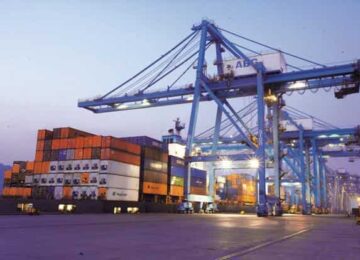According to IDC, by 2021, 50% of Global 2000 companies will rely on the ability to build digitally enhanced products and experiences for the majority of their operations. In response to these changes, several trends have emerged and are developing as we enter 2019. These trends include not only changes in technology but also changes in how products are built and assembled. Have a quick glance over evolving trends in the field of industrial manufacturing.
1. Technological improvements in equipment
Many companies are moving massive amounts of data and processing power to the cloud, but this may not be the best methodology for each application. In industrial applications, edge computing is often used to accelerate data collection and analysis. Edge computing uses dedicated resources in the field instead of remote servers. This significantly increases the speed and volume of data that manufacturers can process in real-time.
Improvements in devices used in industrial manufacturing now and in the future include components included in the Industrial Internet of Things also known in abbreviated form IIoT, which interconnects devices to more efficiently capture and share large amounts of data. Global sourcing companies that have implemented IIoT have seen significant improvements in efficiency, safety, and profitability.
As IIoT evolves, the amount of firmware and software integrated into industrial production equipment will increase and enhance its capabilities in the coming years. Automated stages will replace physical locations of the production process with more advanced digital capabilities.
2. Introduction of AR and VR
AR (Augmented reality) and VR (virtual reality) will be increasingly used in industrial production in the coming years. Initially, AR and VR are already being used by plant supervisors and field and safety engineers to simulate different scenarios in order to predict and prepare for different outcomes. Some of these scenarios are related to the safety and protection of the production environment, while others are used for compliance purposes.
Others, such as AR and VR, can identify process improvements or verify the effectiveness of adopted upgrades. It can also be used to train production workers to use new equipment or perform new job functions. When applied to industrial production, the applications of AR and VR are extensive, and their use is bound to proliferate.
3. Equipment as a Service
Industrial manufacturers and component suppliers are increasingly diversifying their business models into contract services. As the capital costs of integrating state-of-the-art equipment into the manufacturing process continue to rise, the demand for fee-based business services has evolved. These services include physical assets such as machinery and equipment and software capabilities and digital services. Secondary parts of the manufacturing process can also be outsourced, such as the casting, forging, and molding portions of finished products using plastic injection. By outsourcing functions of the finished product, you can work with manufacturers specializing in those areas, saving your business time and money.
Let’s Wrap Up:
As these industry trends take shape, advances in technology will continue to influence the future of industrial manufacturing. With software, firmware, new technologies, hardware improvements, and cloud-based services, we are entering a new phase of the industrial revolution.
Partnering with procurement companies in the USA can improve efficiency and reduce costs in manufacturing industrial components and products is essential. These companies can help you optimize your manufacturing processes by leveraging our long-standing relationships with factories that specialize in manufacturing for all industries.












